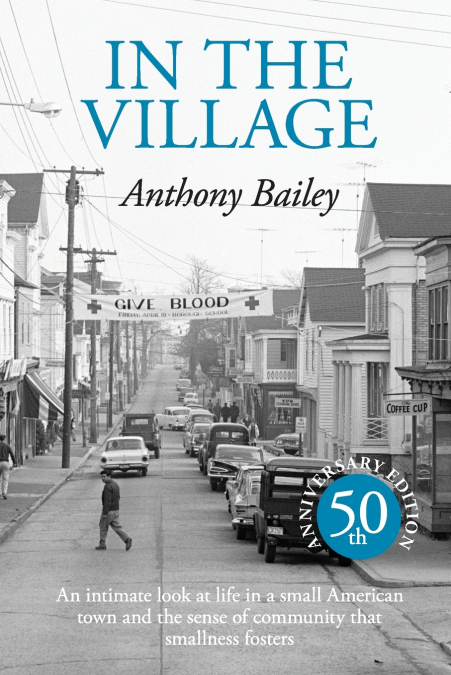
 Librería Desdémona
Librería Desdémona
 Librería Samer Atenea
Librería Samer Atenea
 Librería Aciertas (Toledo)
Librería Aciertas (Toledo)
 Kálamo Books
Kálamo Books
 Librería Perelló (Valencia)
Librería Perelló (Valencia)
 Librería Elías (Asturias)
Librería Elías (Asturias)
 Donde los libros
Donde los libros
 Librería Kolima (Madrid)
Librería Kolima (Madrid)
 Librería Proteo (Málaga)
Librería Proteo (Málaga)
Anthony Bailey’s intimate look at life in Stonington borough made waves when it was published. First appearing in 1971 as a serialized version in the New Yorker, a hard-cover version was published soon thereafter. In 1992, a second paperback edition was printed locally and soon sold out. Copies are still passed hand to hand and quickly scooped up on eBay or at the Niantic Book Barn. Almost considered a rite of passage for newcomers to this small town, In the Village was not universally embraced by all of Stonington’s longstanding residents. Some felt his narrative was too personal and were upset to see their characters so sharply drawn, while others thought it was perfect and were disappointed not to find themselves delineated in its pages. In 2020, Bailey gave his blessing to a third 'anniversary' edition. Bailey had recently undergone a hip surgery and while recovering he would soon fall ill with what was then a new coronavirus. Geoffrey Little, a locally-based consultant and writer who specializes in technology, wellness, and education, carefully stewarded this project forward with Bailey’s four daughters. As executors of his estate, they felt strongly that this project should continue. Little collaborated on the project with Stuart Vyse, a member of the board of the Stonington Historical Society and a retired professor of Psychology, who worked text and photographs into a new layout with book designer, Susan Lindberg. Bailey was much admired by Vyse and his most recent book, Stonington’s Steamboat Hotel, was dedicated to Bailey. This anniversary edition includes the full text of the original as well as Bailey’s introduction to the 1992 edition and also benefits from the addition of select photographs by Rollie McKenna from the archives of the Stonington Historical Society. The passage of time and the passing of some of the key characters does much to soften the edges of some of these observations but it also sharpens the emotion and the intent of Bailey’s writing. There is much to be nostalgic for and there is no doubt that this was meant as an homage to a village now gone. In the Village now serves as a snapshot in time and illustrates in detail some of those colorful characters who otherwise would otherwise be lost in the spare and formal language of obituaries. According to Stuart Vyse, 'Although Stonington borough has changed since Anthony Bailey’s In the Village was first published in 1971, much remains the same. Bailey’s central message-that there is great value in living in small communities-is as true today as it was then, and arguably, it is a message that we need now more than ever before. The Stonington Historical Society has done us all a great service by bringing this beautifully written love letter to Stonington to a new generation of readers.'